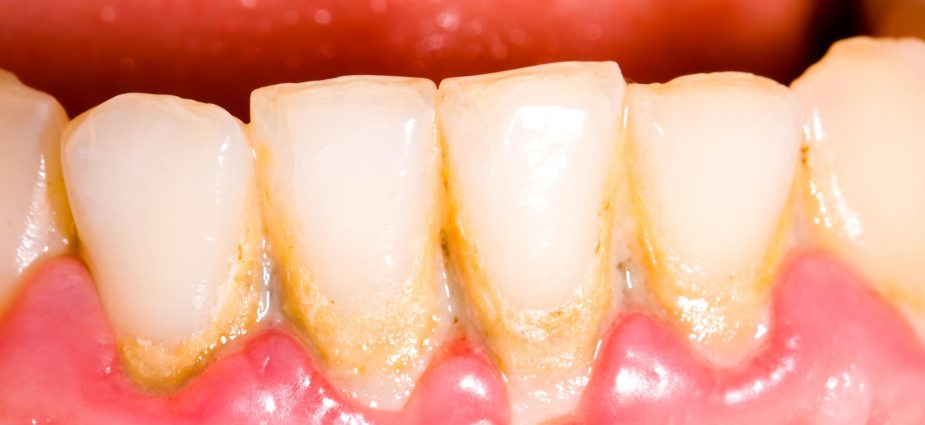Dental Plaque

Dental plaque is a sticky, colorless film that continually forms in between and on the surface of the teeth. It is a biofilm that is made up of microorganisms such as streptococcus mutans and other bacteria. It can develop on teeth above the gum line (supragingival), below the gum line on the roots of teeth (subgingival) and along the gum line (gingival).
If dental plaque accumulates and is not removed, it can harden and turn into calculus or tartar.
What Does Plaque Buildup Lead To?
After eating a meal or snack, the bacteria in plaque release acids that attack the enamel surfaces of teeth, especially above and below the gum line and in between the teeth. Repeated acid attacks increasingly erode the enamel, eventually causing tooth decay and cavities.
When it accumulates beneath the gum line, the associated buildup of bacteria and tartar can cause irritation and inflammation of the gum tissue and can lead to the development of gingivitis and gum disease. Irritated and inflamed gums appear red and may even bleed. Continued plaque accumulation can contribute to structural damage to your teeth and the bone supporting the teeth and gums, as well as other health complications.
How Can You Remove Dental Plaque?
If your gums appear healthy – with no inflammation or redness – then twice daily brushing and proper daily flossing will break up the plaque that naturally accumulates on your teeth. Brushing with a fluoride-based toothpaste will help to remove it from the surfaces of your teeth and floss or interdental cleaners will help to remove it between your teeth. If you notice that your gums are red and inflamed, or that they bleed after you brush your teeth, it is important that you see your dentist.
Gingivitis and early periodontitis can be controlled by routine professional teeth cleanings and more diligent brushing and flossing at home. If your dental professional observes an excessive buildup of plaque and calculus below the gum line, then scaling and/or a procedure called root planing may be necessary. This non-surgical procedure is used to remove plaque and calculus from around the roots of teeth and in the gum pockets.
Scaling and root planing is performed in your dentist’s office. It is not uncommon for dentists to refer more advanced cases to a periodontist, a dentist specializing in gum disease.
Prevention
The best way to avoid the buildup of dental plaque is with thorough brushing and flossing at home. The best way to avoid a build up of calculus is through regular visits to your dental professional for check-ups and cleanings.
The ADA recommends that you visit your dentist at least twice each year to maintain optimal oral health. More frequent prophylaxis (teeth cleaning) is necessary for some individuals.
To prevent excessive plaque buildup in between visits to your dentist, keep the following suggestions in mind:
- Avoid sugary and starchy snacks.
- Eat a balanced diet.
- Refrain from using tobacco products.
- Limit the number of snacks you eat throughout the day.
- Brush your teeth twice daily using a fluoride-based toothpaste.
- Floss your teeth daily, or use an interdental cleaner.


